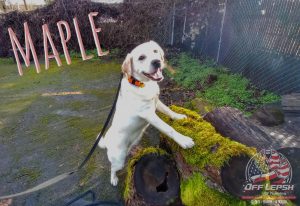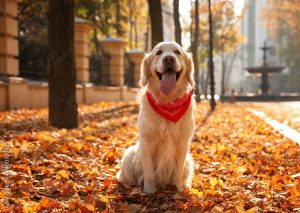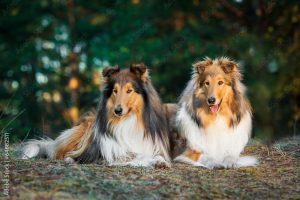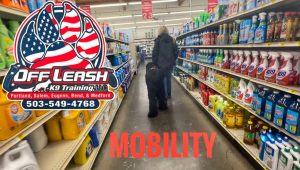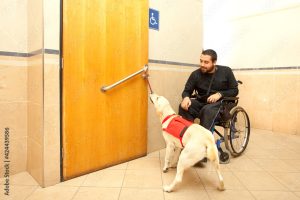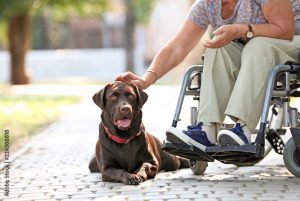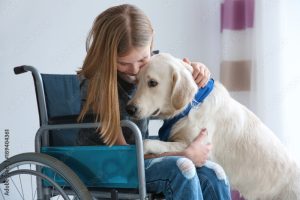The Fab Four: Unveiling the Favorite Service Dog Breeds for Unparalleled Assistance
This article discusses the top four service dog breeds – Labrador Retrievers, Golden Retrievers, Poodles, and Rough Collies – and their importance in assisting individuals with disabilities, including their physical and behavioral traits, tasks and roles, and their historical significance in service dog training.
*For service dog public access training and task training, email [email protected] or call 503-549-4768, ext 5*
Service Dogs and Their Importance
Service dogs play a vital role in providing assistance and support to individuals with disabilities, significantly improving their quality of life. These remarkable canines are individually trained to perform specific tasks for people with disabilities, ranging from guiding the visually impaired to offering emotional support for those with psychiatric conditions. The impact of service dogs goes beyond mere companionship, as they become essential aids, helping their handlers navigate daily life and providing life-changing assistance.
The “Fab Four” service dog breeds, comprising Labrador Retrievers, Golden Retrievers, Poodles, and Rough Collies, are recognized for their exceptional abilities and contributions to the service dog community. Their diverse skills and qualities enable them to fulfill a wide range of service dog roles, making them highly favored choices for individuals with disabilities. For example, Labrador Retrievers are well-known for their proficiency in guide work for the visually impaired, mobility assistance, and even search and rescue operations, showcasing their versatility and unwavering commitment to serving their handlers. The value of these breeds in the service dog community cannot be overstated, as they continue to positively impact the lives of individuals with disabilities.
Characteristics of Labrador Retrievers as Service Dogs
Labrador Retrievers possess specific physical and behavioral traits that make them exceptionally well-suited for service dog roles. In addition to their strong, muscular build and water-resistant coat, which enable them to provide valuable support to individuals with disabilities, they also exhibit a friendly, outgoing nature and high trainability, making them well-equipped for guide work, mobility assistance, and search and rescue operations. For instance, their physical attributes allow them to assist individuals with mobility challenges by pulling wheelchairs, providing stability, and retrieving items for their handlers.
Moreover, Labrador Retrievers’ trainable nature and friendly disposition play a crucial role in their effectiveness as service dogs. Their ability to form strong bonds with their handlers and adapt to various environments makes them valuable assets in fulfilling critical service dog roles. Their consistent performance in diverse service dog tasks underscores their exceptional capabilities and enduring legacy in the realm of service dog work, further solidifying their reputation as one of the “Fab Four” service dog breeds.
The Role of Golden Retrievers in Service Dog Work
Golden Retrievers play a pivotal role in service dog work due to their unique blend of physical and behavioral traits. Their sturdy, well-proportioned physique and friendly demeanor make them well-suited for various tasks and roles. For instance, their intelligence and friendly nature enable them to excel in guide work, mobility assistance, and emotional support for individuals with disabilities. Their exceptional ability to provide comfort and a sense of security during challenging moments makes them ideal candidates for individuals with psychiatric conditions, further highlighting their significant impact on the lives of those in need.
Furthermore, Golden Retrievers are known for their remarkable emotional intelligence and unwavering devotion to their owners. Their ability to offer comfort and reassurance during challenging circumstances showcases their invaluable role in providing emotional stability for individuals with disabilities, contributing to their overall well-being.
Poodles: Versatile Service Dog Breeds
Poodles are widely acknowledged for their exceptional qualities that make them well-suited for service dog roles. Their distinctive curly, hypoallergenic coat and athletic build not only make them visually appealing but also highly functional in various service dog capacities. Due to their unique physical attributes, Poodles are often trained for taskssuch as guide work, alerting for seizures, and offering emotional support to individuals with disabilities. Their remarkable intelligence, trainability, and alert nature make them invaluable assets in the service dog community.
For example, a Poodle can undergo specialized training to learn how to alert its handler to an oncoming seizure, potentially providing life-saving assistance and affording valuable time for preparation and safety measures. This ability highlights the crucial role that Poodles play in enhancing the safety and well-being of individuals with disabilities. Their adaptability and responsiveness to training make them highly effective in fulfilling the diverse needs of individuals with disabilities, solidifying their reputation as one of the “Fab Four” service dog breeds.
Rough Collies: Their Suitability as Service Dogs
Rough Collies are well-suited for service dog roles due to their physical and behavioral traits. Their strong, well-muscled bodies and profuse double coat make them well-equipped for various tasks such as guide work, emotional support, and therapy for individuals with disabilities. For example, their intelligent and sensitive nature allows them to provide therapy to individuals with autism, offering companionship and support to improve their social skills and independence.
In addition to their physical characteristics, Rough Collies’ loyalty and devotion to their families make them ideal for providing emotional support to individuals with disabilities. Their gentle and attentive demeanor enables them to assist people in managing anxiety and navigating everyday challenges, making them invaluable companions in service dog roles. Furthermore, their adaptability and responsiveness to training make them highly effective in fulfilling the diverse needs of individuals with disabilities, further solidifying their reputation as one of the “Fab Four” service dog breeds.
Common Tasks and Roles of the “Fab Four” Breeds
Labrador Retrievers are highly regarded for their proficiency in guiding the blind, enabling visually impaired individuals to navigate their surroundings with confidence and security. Additionally, they are adept at providing mobility assistance, supporting those with physical limitations in their daily activities, such as retrieving dropped items, opening doors, and even assisting with dressing and undressing, thereby significantly enhancing the independence of their handlers.
Golden Retrievers demonstrate remarkable proficiency in providing emotional support for individuals with disabilities. Their friendly and devoted nature allows them to form deep bonds with their handlers, offering comfort and reassurance during challenging circumstances. Moreover, their gentle and nurturing disposition makes them particularly effective in providing emotional stability for individuals with psychiatric disabilities, contributing to their overall well-being. The collective contributions of these four breeds in performing tasks such as guiding the blind, alerting for seizures, providing emotional support, and assisting individuals with mobility challenges underscore their invaluable role in enhancing the quality of life for individuals with disabilities.
Poodles, with their distinctive curly, hypoallergenic coat and high intelligence, excel in alerting for seizures, a critical task for individuals with epilepsy and other seizure disorders. Their keen sense of awareness allows them to detect subtle changes in their handler’s condition, enabling timely intervention and assistance. In addition to this, Poodles are also highly effective in providing emotional support for individuals with disabilities, offering companionship and unwavering loyalty to their handlers.
Rough Collies, known for their intelligence and sensitivity, are proficient in guiding the visually impaired and providing emotional support for individuals with disabilities. Their gentle and devoted nature, combined with their keen sense of awareness, allows them to offer valuable assistance in navigating various environments and providing comfort to their handlers during challenging situations.
The “Fab Four” in Service Dog Training Programs
Service dog training programs meticulously select and prioritize Labrador Retrievers, Golden Retrievers, Poodles, and Rough Collies based on a range of specific criteria. These criteria include temperament, trainability, and physical attributes. For example, Labrador Retrievers are known for their friendly and outgoing nature, which makes them well-suited for interacting with individuals with disabilities and adapting to various social environments. Their trainability and eagerness to please also contribute to their success in service dog roles. Similarly, Golden Retrievers are chosen for their intelligent and friendly demeanor, which enables them to provide emotional support and guidance to individuals with disabilities. Their devotion to their owners and ability to form strong bonds make them ideal candidates for service dog training programs.
Poodles, with their highly intelligent and alert nature, are specifically selected for their ability to excel in tasks such as alerting for seizures and providing emotional support. Their hypoallergenic coat and athletic build also make them versatile in fulfilling various service dog roles. Lastly, Rough Collies are chosen for their intelligence, sensitivity, and devotion to their families, which allows them to provide emotional support, guidance, and therapy to individuals with disabilities. Their strong bonds with their owners and gentle nature make them valuable assets in service dog training programs.
The popularity of these four specific breeds in service dog training programs is a testament to their adaptability, trainability, and proven success in fulfilling a wide range of service dog roles. These breeds have consistently demonstrated their ability to positively impact the lives of individuals with disabilities, making them invaluable assets in service dog training programs. As a result, the “Fab Four” breeds continue to be prioritized in the selection process for service dog training programs, ensuring that individuals with disabilities receive the best possible assistance and support from their service dogs.
Benefits of Using the “Fab Four” Breeds as Service Dogs
The “Fab Four” breeds are highly valued for their remarkable ability to provide invaluable assistance to individuals with a diverse range of physical or mental disabilities. For instance, Labrador Retrievers are renowned for their proficiency in guiding the blind, offering mobility assistance, and participating in search and rescue operations, showcasing their versatility and unwavering commitment to serving their handlers. Similarly, Golden Retrievers excel in tasks such as guide work, mobility assistance, and providing emotional support to individuals with disabilities, demonstrating their unwavering dedication to enhancing the lives of those in need.
Moreover, Poodles are recognized for their exceptional intelligence, trainability, and alert nature, making them well-suited for roles such as guide work, seizure alerting, and offering emotional support to individuals with disabilities. Their keen senses and adaptability enable them to fulfill critical tasks that significantly impact the well-being of their handlers. Likewise, Rough Collies’ intelligence, sensitivity, and devotion to their families make them ideal for guide work, emotional support, and therapy for individuals with disabilities, underscoring their vital role in providing comfort and assistance. The collective impact of these breeds is profound, as they contribute to the increased independence, reduced anxiety, and improved quality of life for individuals with disabilities, cementing their position as indispensable allies in service dog work.
Training Processes for the “Fab Four” Breeds
When it comes to training the “Fab Four” service dog breeds, specialized and individualized methods are employed to cultivate their unique traits and abilities for service dog roles. For instance, Labrador Retrievers are specifically trained for guide work for the visually impaired. Their intelligence, strong build, and water-resistant coat make them well-suited for this task. They are taught to navigate through various environments, recognize obstacles, and provide physical support to their handlers in a manner that is both safe and efficient.
Golden Retrievers, on the other hand, undergo training that aligns with their friendly demeanor and emotional intelligence, making them ideal for tasks such as disrupting/deep pressure tasks and mobility assistance. They are taught to provide comfort and physical support to individuals with disabilities, and their ability to remain calm and devoted to their owners allows them to excel in these roles. This tailored approach ensures that Golden Retrievers can effectively fulfill their responsibilities as service dogs, providing invaluable assistance to those in need.
Similarly, Poodles are trained to utilize their high intelligence and alert nature for tasks such as seizure alerting and emotional support. Their hypoallergenic coat and athletic build make them ideal for these roles, and training programs focus on honing their natural abilities to ensure they can provide the necessary support to individuals with disabilities. This tailored approach to training maximizes the potential of Poodles as service dogs, allowing them to contribute to the well-being and independence of their handlers.
Rough Collies are also trained with a focus on their unique traits, such as intelligence and sensitivity, to excel in guide work, emotional support, and therapy for individuals with disabilities. Their profuse double coat and strong physique make them well-suited for these roles, and training programs ensure that their innate qualities are honed to benefit those in need. By tailoring the training process to the specific characteristics of each breed, service dog training programs optimize the potential of Labrador Retrievers, Golden Retrievers, Poodles, and Rough Collies, enabling them to make a meaningful impact in the lives of individuals with disabilities.
Historical Significance of the “Fab Four” Breeds in Service Dog Training
The historical significance of Labrador Retrievers, Golden Retrievers, Poodles, and Rough Collies in service dog training programs is deeply rooted in their consistent success in fulfilling service dog roles and positively impacting the lives of individuals with disabilities. For example, Labrador Retrievers have been widely recognized for their exceptional capabilities in guiding the visually impaired, providing mobility assistance, and even participating in search and rescue operations. This extensive track record of service demonstrates the enduring legacy of these breeds in the realm of service dog work.
Furthermore, the preference for these specific breeds is not only based on their individual traits but also on their collective ability to address a wide range of disabilities and challenges. Golden Retrievers, for instance, have excelled in providing emotional support and companionship to individuals with disabilities, showcasing their remarkable adaptability and empathy. The historical significance of these breeds is not merely a matter of tradition but a testament to their unwavering commitment to serving and supporting those in need. Their consistent performance in diverse service dog roles over time has solidified their position as the “Fab Four” breeds, demonstrating their invaluable contributions to the field of service dog training.

